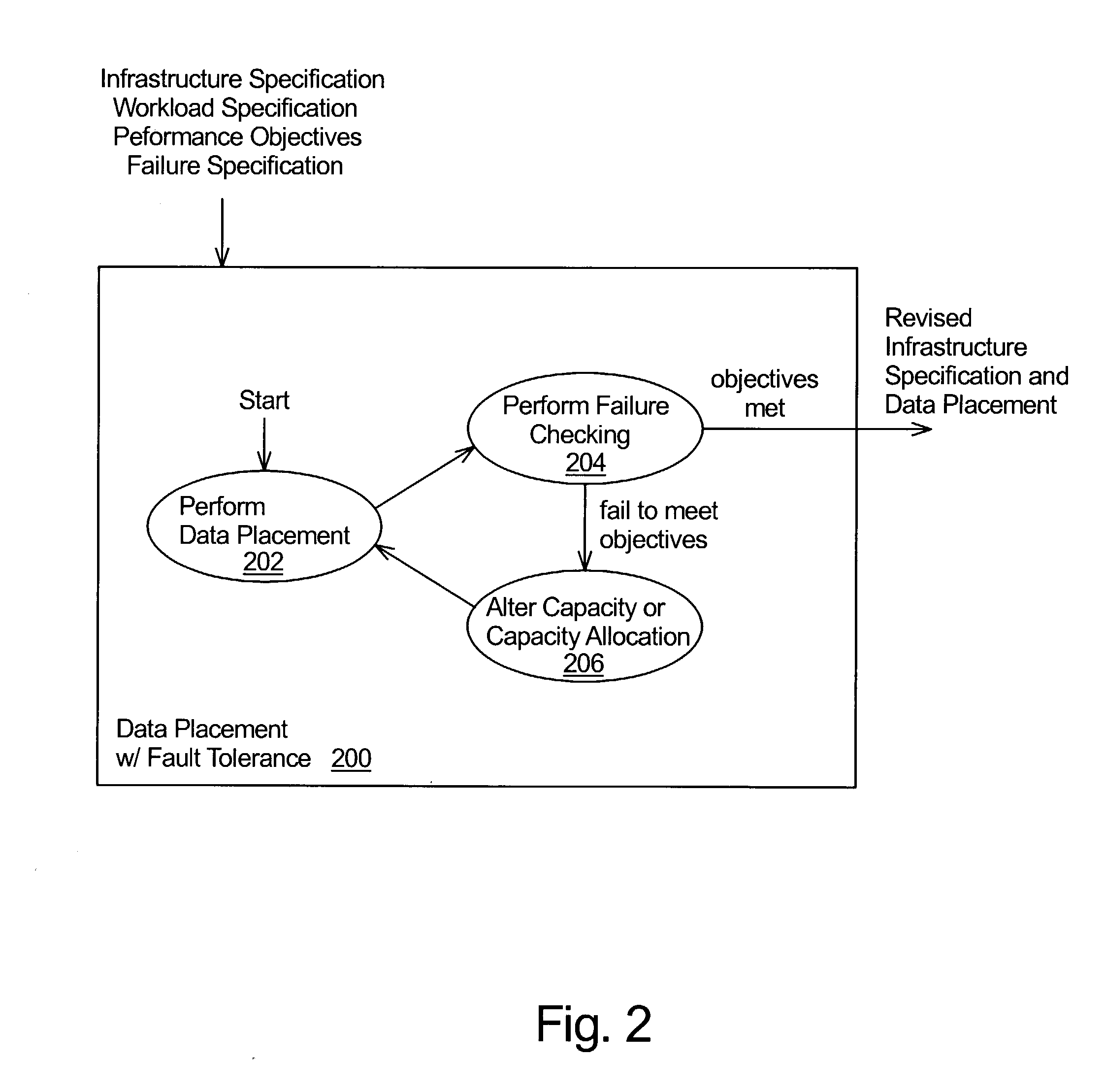Data placement for fault tolerance
a data placement and fault tolerance technology, applied in computing, error detection/correction, instruments, etc., can solve the problems of unacceptably high level, unacceptably low reliability, and the cost of storage capacity needed to store all data copies in the system, so as to increase the system's ability to stor
- Summary
- Abstract
- Description
- Claims
- Application Information
AI Technical Summary
Problems solved by technology
Method used
Image
Examples
Embodiment Construction
[0012]The present invention is a technique that takes fault tolerance into account when placing data objects and replicas of data objects in a distributed computing system. In a distributed computing system, processing capability and data storage capacity are distributed in a network. Typically, nodes of the network each include a processor and data storage. Some nodes store data objects and, thus, function as storage servers. Other nodes access the data objects stored on the servers and, thus, function as clients of the servers. A node may function as both a storage server and as a client at the same time.
[0013]In accordance with the present invention, data objects are placed in a distributed system to satisfy desired performance levels, even under fault conditions. The distributed system may be modeled (e.g., analytical model or a simulation model), in which case, representations of data objects may be placed in a model of a distributed system. The data objects, and possibly repli...
PUM
 Login to View More
Login to View More Abstract
Description
Claims
Application Information
 Login to View More
Login to View More - R&D
- Intellectual Property
- Life Sciences
- Materials
- Tech Scout
- Unparalleled Data Quality
- Higher Quality Content
- 60% Fewer Hallucinations
Browse by: Latest US Patents, China's latest patents, Technical Efficacy Thesaurus, Application Domain, Technology Topic, Popular Technical Reports.
© 2025 PatSnap. All rights reserved.Legal|Privacy policy|Modern Slavery Act Transparency Statement|Sitemap|About US| Contact US: help@patsnap.com



